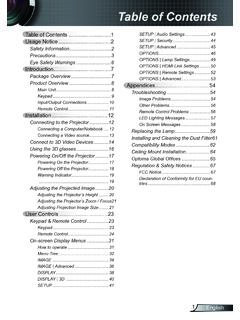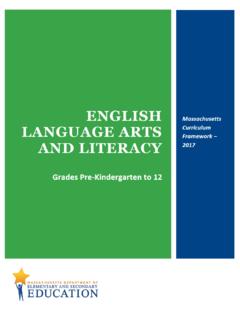Transcription of T. S. ELIOT THE WASTE LAND Stanford University 2017 …
1 1 T. S. ELIOT THE WASTE land Thomas Sheehan Stanford University 2017 table OF CONTENTS note on The WASTE land one-page outline of the poem of The WASTE text of The WASTE land with the outline WASTE land : Some S. ELIOT s notes to The WASTE Chaucer, Whan that aprill from Canterbury Tales NOTE ON THE WASTE land A dream of the collective unconscious of Western civilization ou can experience your dreams in at least two ways. One way is within the immediacy of the subconscious itself, while you toss in sleep. There the dream s power is direct, unobjectified, totally engaging. You are the dream and all the characters in it. The other way is by analyzing the dream, perhaps on the psychiatrist s couch where you may attempt to objectify the dream and distance yourself from it so as to study, understand, and integrate it into your consciousness. Likewise a poem.
2 You can objectify it, dissect the images, scan the rhythm, search down the allusions in short, study it. But the poem, etherized upon your table , must be brought back to life, to a personal, phenomenological experience of immediacy, where its force grips you directly, dramatically, and where you can live the dream over again, this time consciously. ELIOT s The WASTE land is perhaps the most studied, poked, prodded, dissected poem of the century. And there is no doubt that one s enjoyment of it may be enhanced by knowing the wide range of literary and mythic sources that ELIOT drew upon. The ancient vegetation myths of the Phoenician god Attis, for example, who had to die each year in order to restore nature s vitality. Or the Grail legend of the Fisher King whose tragic impotence brought sterility and blight upon his kingdom until the new Knight came to the Chapel Perilous and, through an ordeal, restored life to the land .
3 But these symbols are not found primarily in the footnotes of literary criticism or even in tomes on cultural anthropology. They arise from the depths of one s own unconscious, perhaps from the collective unconscious of the whole race. How much richer, then, when ELIOT paints the death of modern civilization against the background of these symbols. The mythic unconscious knows that the drought of March is the promise of April s sweet showers, but does the demythologized modern and postmodern consciousness have any hope of new life? Can the buried god, the Hanged Man, arise this spring in the WASTE land ? Will the polluted Thames overflow this year and wash us in fertility? Is sex anything more than violation? This reading of The WASTE land hopes to restore the poem to the realm of immediacy, to ask these questions and evoke these symbols at that primal level whence arise the basic need of humankind: ritual, dance, word, imagination.
4 Try to experience the poem as a collective dream of Western civilization as ELIOT experienced that in post-war 1922. Male and female voices alternate in series of vignettes of corruption (I through III), death (IV), and possible resurrection (V). Scenes of sex and fertility, death and life, myth and ritual, the past and the present (with its class differences) mingle in a dialectical harmony that leads to the possibility of a peace that passes understanding. The point of our reading will not be to analyze its possible referents but to experience this collective dream personally, existentially. Y WASTE LANDOUTLINE EPIGRAPH I. THE BURIAL OF THE DEAD April Marie, the archduke s cousin The prophet Tristan The hyacinth girl Madame Sosostris Unreal city GAME OF CHESSU pstairs: the boudoirThe room The woman Music from below What shall we ever do? Downstairs: the pub About Lil and Albert FIRE SERMONThe Thames: the nymphs have departed The dull canal Pjilomela Mr.
5 Eugenides Tiresias and the typist Lower Thames Street The women s dirge To Carthage then I came BY WATERP hlebas the Phoenician V. WHAT THE THUNDER SAID Death and dying Passage through the mountains and the rocks No water Who is that third? Barbarians, falling towers The nightmare The chapel: Dead bones can harm no one Rain Thunder Datta: give Dyadhvam: be compassionate Damyata: self-discipline Fishing, with the arid plain behind The fragments Hieronymo mad againe Data. Dyadhvan. Damyata. Shantih shantih shantih OF THE WASTE LANDE pigram The poem begins with the Sibyl/prophetess, who could foresee the future, declaring that she wants to die. The poem touches on themes of corruption, death, and possible resurrection. The cave of the Sibyl of Cumae, north of Naples, Italy: I. THE BURIAL OF THE DEAD April: The protagonist of the dream (hereinafter P ) muses on the cruelty of an April spring that seems not entirely promising.
6 The voice of Countess Marie Larisch, the Archduke Rudolf s cousin, recalls the simple joys of youth as well as the boredom of the present. #Exhumations_and_Forensic_Evidence * * * A wizened Old Testament prophet accosts P and tells him he lives in a desert where humankind no longer stands tall but is likened to a handful of dust: death. A lover s scene: A verse from Wagner s Tristan and Isolde sings of a man s longing for his lover. She responds, plaintively, that once, a year ago, he gave her hyacinths, a symbol of rebirth. He responds that, after their love- making he fell apart, knew nothing but silence. The scene closes with another verse from Tristan: The sea is void and bleak. Madame Sosostris, Egyptian tarot reader: She is introduced by a barker s voice and then begins to tell P s fortune: Fear death by water. She fears the police. * * * London, the unreal City: I had not thought that death had done so many.
7 Will the corpse you planted last year begin to sprout this year? Metafiction? You, hypocrite reader, my likeness, my brother! GAME OF CHESS:HIGH AND LOW SOCIETY A. UPSTAIRS: HIGH SOCIETY Description of madame s boudoir: mirror, candelabra, jewels and perfume, ceiling, mantelpiece, picture of Phlomena. P enters, conversation between P and the nervous lady, interrupted by honky-tonk piano music from the tavern downstairs. B. DOWNSTAIRS: LOWER-CLASS TAVERN SOCIETY The monologue: Albert has been demobilized from the British army after World War I.. Lil, his wife, isn t looking very good: bad teeth, a long face: she s had an abortion. The narrator advices her to pull herself together lest someone else show Albert a good time. As the barkeep urges them to finish ( Hurry up please it s time ), the women leave as the men sing Good night, ladies. The woman from upstairs ends the scene with an Ophelia-like Good night, good night.
8 FIRE SERMON:THE DEATH OF SEXUALITY Part One: The violation of the Thames The narrator goes back and forth between the idyllic Themes of the 16C and today, when rats remind one of the end of fertility and the death of the kings, now only dry bones. There s a vulgar song about Mrs. Porter s brothel, contrasted with the innocence of children s voices singing in a religious choir. Philomela s violation is recalled: Jug, jug as she tries to name Tereus, the rapist. Part Two: A weekend tryst Mr. Eugenides invitation to a weekend assignation at the Metropole, Brighton. Part Three: Tiresias and the violation of the typist Well now that s done, and I m glad it s over. Part Four: The Thames now and in the 16th century Music flows from the typist s room down to a bar in Lower Thames Street, leading to the counterpunctual song about (1) the dirty Thames today and (2) the idyllic 16C Thames when the lovers Queen Elizabeth and the Earl of Leicester float down the river on an elegant ship.
9 The Thames Maidens song Part Five: The sexual experiences of three young lower-class women (1) by Richmond (2) at Moorgate (3) on Margate Sands. Again, the Thames Maidens song. Conclusion: Augustine at Carthage: Burning. BY WATERThe corruption of life, fertility, and sexuality culminates in the death of Plebas the Phoenician. Consider Phlebas, who was once handsome and tall as you. The lowest point of the poem. V. WHAT THE THUNDER SAID1 The torchlight red on sweaty faces We who were living are now dying / With a little patience. Here there is no water but only rock 1 ELIOT wrote to Bertrand Russell on 15 October 1923: It gives me great pleasure to know that you like The WASTE land , and especially Part V, which in my opinion is not only the best part, but the only part which justifies the whole at all. Russell s Autobiography, II, 173. Who is the third who walks always beside you?
10 (Luke 24:13 ff.) The hooded hordes and falling towers The nightmare The chapel perilous Dry bones can harm no one. The thunder speaks Data. Dayadhvam. Damyata. The closing I sat upon the shore / Fishing, with the arid plain behind me. These fragments I have shored against my ruins. Data. Dayadhvam. Damyata. Shantih shantih shantih WASTE LAND1922 [with the outline inserted] EPIGRAM Nam Sibyllam quidem Cumis ego ipse oculis meis vidi in ambulla pendere, et cum illi pueri dicerent: ; respondebat illa: . [I once saw with my own eyes the Sibyl at Cumae hanging in a cage. And when the young men said to her, Sibyl, what do you want? she replied, I want to die. ] For Ezra Pound il miglior fabbro I. THE BURIAL OF THE DEAD [April] APRIL is the cruellest month, breeding Lilacs out of the dead land , mixing Memory and desire, stirring Dull roots with spring rain.




